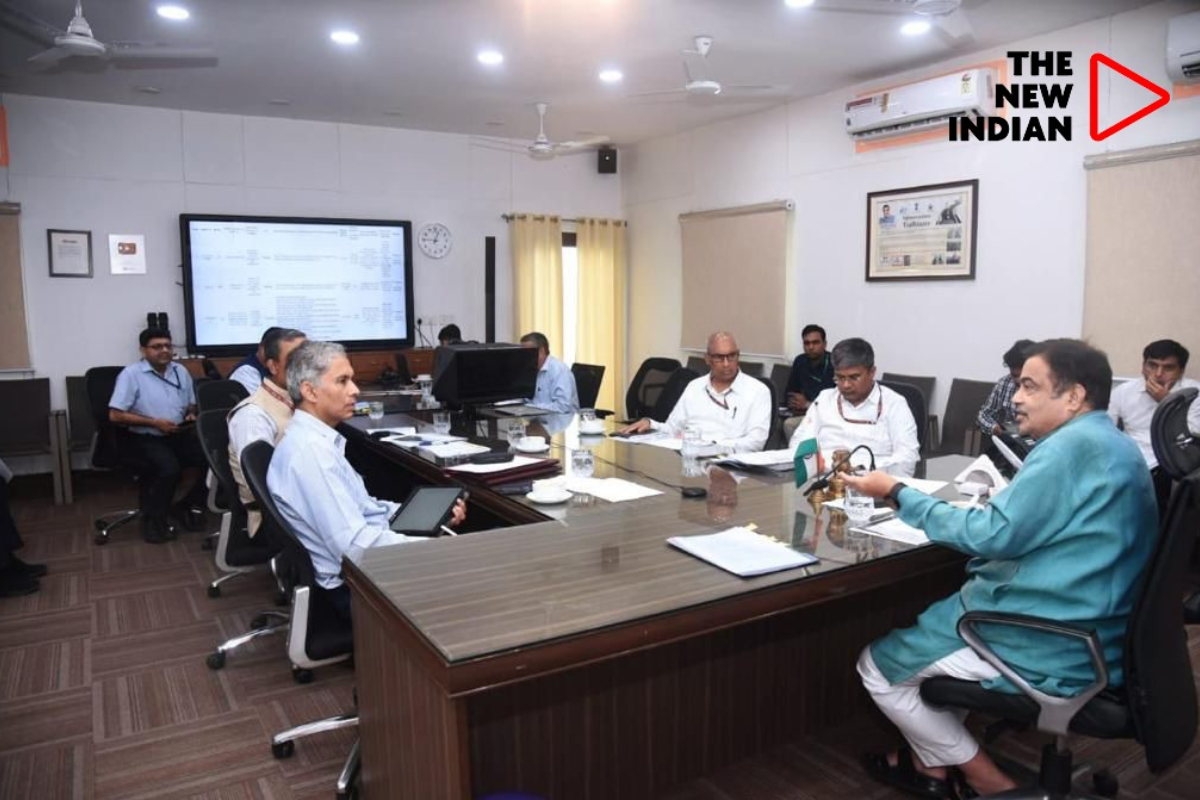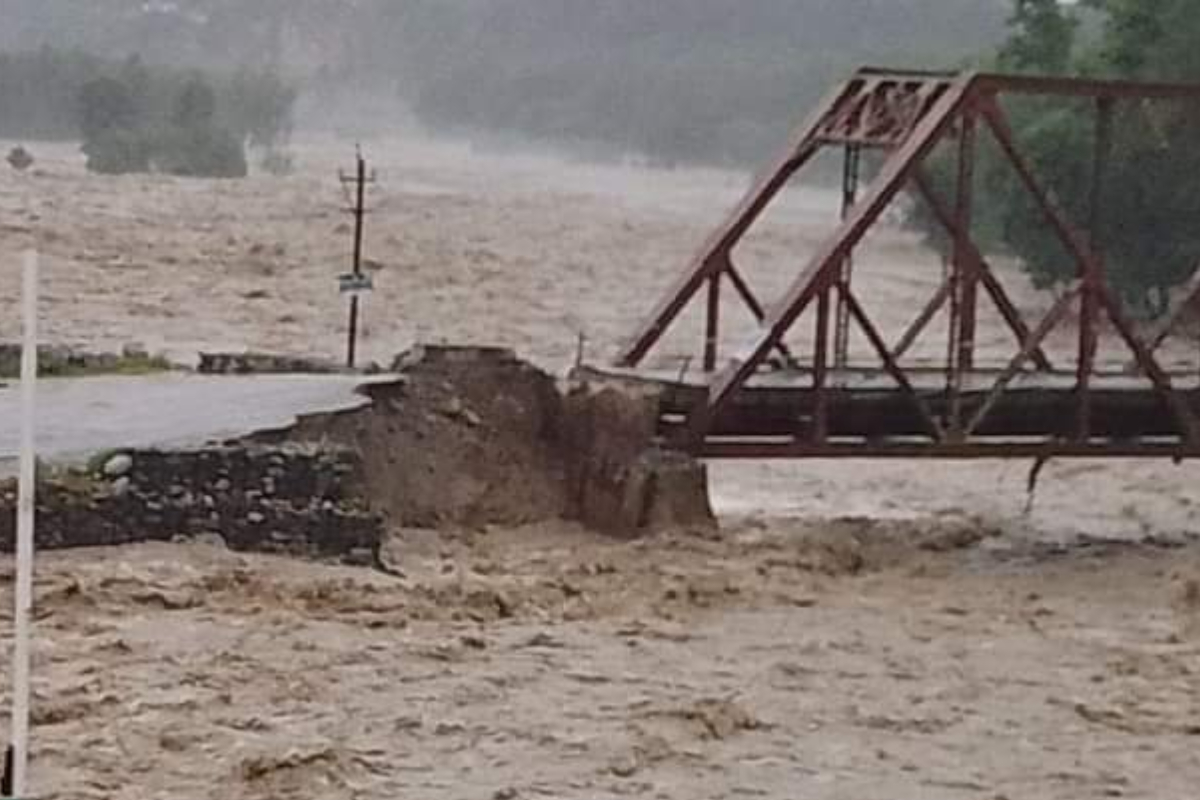KOLKATA: Flash floods and landslides affect life in Himachal Pradesh as heavy torrential rain lashes several parts of North India.
A viral video on social media shows water gushing into residential areas, carrying piles of logs. Another video showed the Beas River, which had already crossed the danger mark, flowing at an extreme pace.
The Ravi, Beas, Satluj, Swan and Chenab rivers are overflowing, which has caused floods in major areas.
Meanwhile, the neighbouring state of Uttarakhand too suffered a similar fate, with landslides and flash floods affecting daily life in the state.
There are reports of several tourists stuck in the two popular tourist destinations during the summer.
Meanwhile, Delhi witnessed floods in many areas, and there is a report of a road cave-in in the Rohini area of Delhi.

The Met Department has predicted another three days of heavy rainfall in Himachal Pradesh. A red alert has been issued in seven districts of the Himalayan state. The state capital, Shimla, was issued an orange alert.
“Extremely heavy rainfall is predicted at isolated places over Himachal Pradesh, Punjab, Haryana and East Rajasthan,” the Indian Meteorological Department (IMD) stated.
“Heavy to very heavy rainfall is predicted at isolated places over Uttarakhand, Chandigarh, Delhi, West Uttar Pradesh, Gujarat State, East Madhya Pradesh, Konkan and Goa,” it added.
“Heavy rainfall is predicted at isolated places over West Rajasthan, West Madhya Pradesh, Bihar, Sub-Himalayan West Bengal, Sikkim, Assam, Meghalaya, Andaman and Nicobar Islands, coastal Andhra Pradesh and Madhya Maharashtra,” IMD further added.
#flash | Red alerts have been issued in 7 districts of Himachal due to heavy rain, which is expected to continue for 3 more days. This heavy rainfall has resulted in an increase in water flow at the Bhakra Nangal Dam, prompting authorities to issue a red alert, @joymalabagchi
— The New Indian (@TheNewIndian_in) July 10, 2023
Meanwhile, environmental experts blamed unregulated tourism, unplanned and irrational construction, excavation and the cutting of hills and trees for such monsoon mayhem.
Talking to The New Indian, Manu Singh, an environmental expert, stated, “Be it Leh, Kedarnath, Kerala or Himachal Pradesh, the destruction caused by rampaging sludge and watery debris is more due to unplanned and irrational construction and unregulated tourism than to cloud bursts.”
“But the governments, who are fuelled by the corrupt money of contractors, continuously turn a blind eye towards the same being the prime culprits behind the heavy loss of lives and livelihoods,” he added.
Blaming unscientific constructions, Singh said, “The heavy and unscientific constructions of highways, along with the mushrooming of hotels and homestays, have an adverse effect on the fragile tectonic structure of the terrain.”
Singh laments that society has failed to learn from past tragedies. “It is extremely painful that both political and societal entities have learned nothing from past tragedies. They remain obstinate towards the adoption of the eco-friendly concept of development.”

Environmentalist Varun Gulati also blamed human factors for the troubles and tragedies. “Although natural causes trigger landslides, they can also be caused by human activities such as excavation, cutting of hills and trees, and excessive infrastructure development. The main reason for flash floods in hilly regions is erosion of soil due to the cutting of trees for infrastructure like highways, dams.”
Gulati cited that Punjab, Haryana and Delhi – which are in the catchment areas of rivers like Yamuna, Ghaggar and Beas – are at huge risk as most parts of these areas do not have proper mechanisms to tackle flood-like situations.
Citing the inundation of Delhi’s posh areas, Gulati said, “Delhi experiences annual flooding due to factors such as excessive concrete structures, the disappearance of water bodies, encroachments on the stormwater drains and the discharge of untreated industrial and domestic sewage and waste into Yamuna from Haryana and UP. Erosion on river banks due to illegal sand mining on flood plains also plays a key role in flooding.”
Meanwhile, 38 teams from the National Disaster Response Force (NDRF) are wading through the water in Punjab, Himachal Pradesh and Uttarakhand for relief and rescue operations.
Meanwhile, Delhi is on high alert as evacuation from low-lying areas will begin once the Yamuna River crosses the danger mark.










